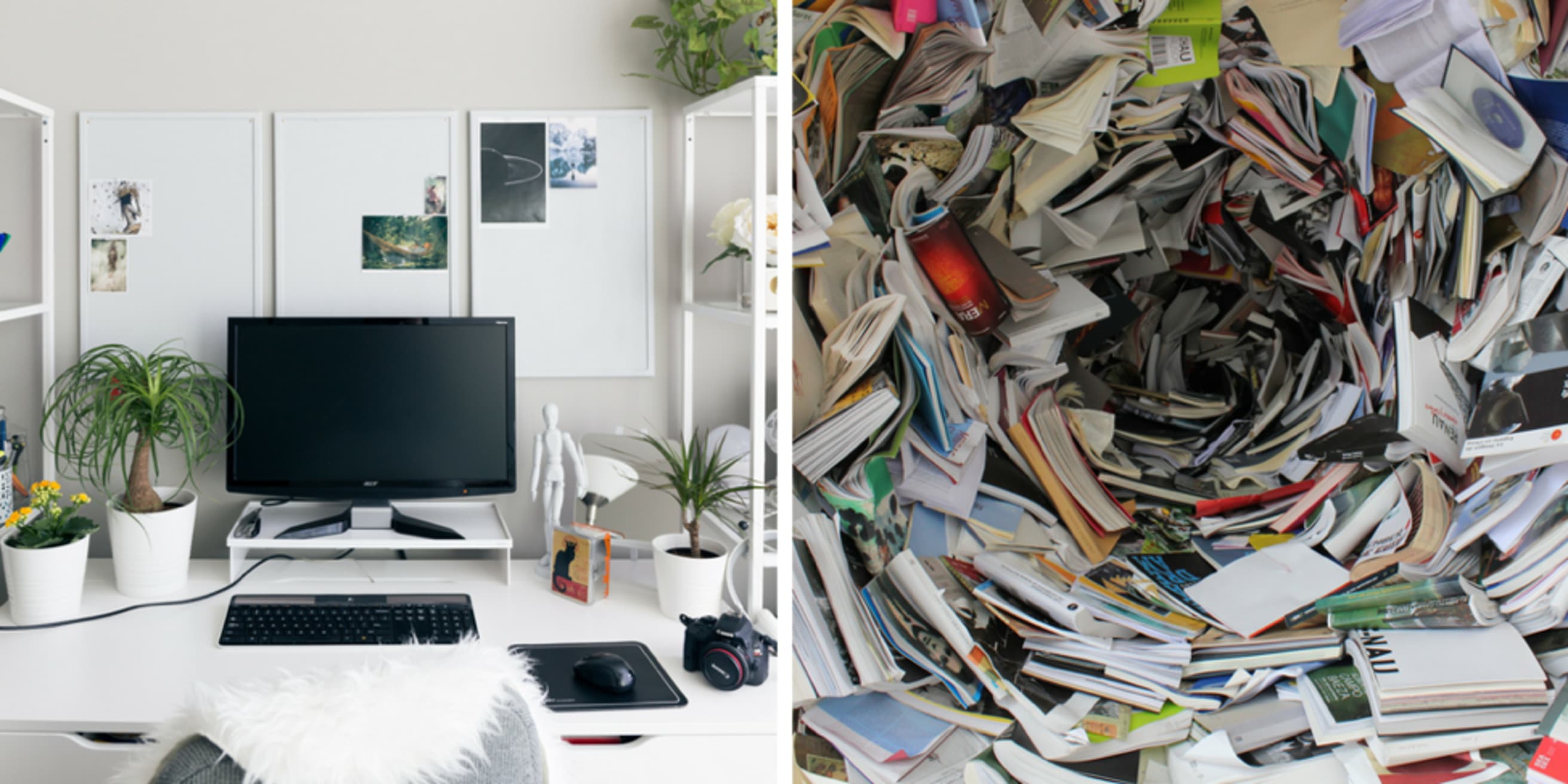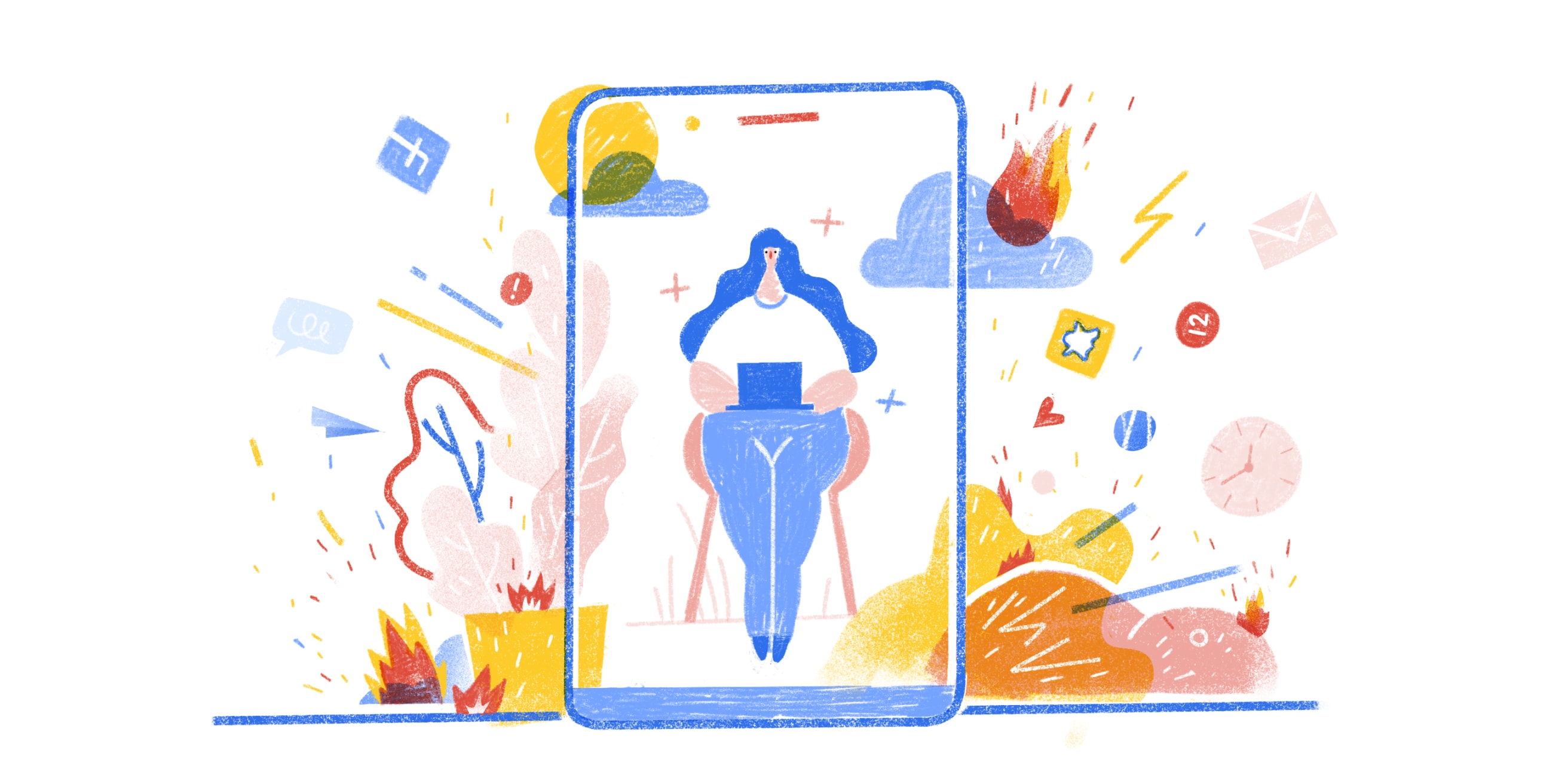When people find out that I work from home and set my own schedule, the conversation is often met with an upbeat, “Wow you’re so lucky” quickly followed by, “You must have so much self-control. I would end up watching Netflix all day.”
From the outside, it might look like people who work from home have more self-discipline or drive than others. But I’ll let you in on a little secret.
We're flattered, but what we have isn’t more willpower or passion for productivity – it’s habits and routines that we cling to religiously because we know we’re all one tiny, little, harmless peek at our notifications away from getting absolutely nothing crossed off our to-do lists for the day.
Despite endless statistics about how remote work increases productivity, working from home is a relatively new concept that takes a lot of trial and error before finding a routine that works. Productivity isn’t an innate skill (for most people anyway). It’s not even a skill really – it’s a series of habits that take consistent patience to build.
As remote workers, there are usually significant disparities between how we imagine our days going, and how they actually end up. However, with some practice and diligence, there are little tweaks anyone can make to their routines to turn their remote work expectations into a consistent daily reality.
1. Getting an Early Start

Image credit left: Lauren Mancke, Image credit right: Nathan Dumlao
What we think it’s going to be
You wake up early, eat a well-balanced breakfast and sip your morning coffee while catching up on your daily news and emails. After coffee comes 30-minutes of meditation and self-development work, followed by daily goal setting. You already mapped out your plan for the day the night before, so after breakfast, you get ready and head to your office of the day where you’ll bang out a few solid hours of deep, peaceful work.
What it actually is
You wake up in reaction mode, rolling over, grabbing your phone and immediately checking email. Working remotely can mean interacting with people in different time zones which usually results in middle-of-the-night emails and messages that you won’t see until morning. It’s easy to reflexively begin responding to things that came in while you were asleep.
You promptly enter problem-solving mode which throws off the rest of your day. The remainder of your morning is then spent working on others’ requests which cause you to lose sight of your own priorities. When you finally look up from your computer, you realize it’s 2 pm and you’re still in your PJs with a soggy bowl of cereal and your, now cold, coffee sitting next to you. Your carefully planned out day is out the window. Oh well, maybe tomorrow.
A new approach
Instead of jumping into the impromptu tasks waiting in your inbox, plan your morning the night before and stick to that plan no matter what. It’s easy to prioritize things that others ask of you, but be wary of restructuring your entire day and losing sight of your initial goals.
Consider how you're supposed to act in an airplane emergency – you can't help others until you've secured your own oxygen mask first.
If a new task comes in that isn’t 100% urgent, designate a time that you’ll work on it uninterrupted or try to delegate the problem solving as much as possible until you have time to deal with it. If your mornings tend to start like this on a regular basis, consider waking up earlier to be proactive, or make it known to your colleagues or clients that you're happy to answer their emails in the afternoon if it's not urgent.
If you're just not a morning person that’s completely okay! Don’t let the hundreds of articles about successful entrepreneurs with 5 am wake-up times discourage you from creating a morning routine that’s comfortable for you.
And if, despite all your best intentions, you do find yourself sidetracked, don’t panic. Take a five-minute break to step away from your computer, breathe, write down the next specific thing you want to focus on, then come back to your computer with that singular task in mind.
Note
If you find yourself constantly distracted by your team's group chats, consider switching your team or clients to Twist for calmer, more productive communication.
2. Deciding where to work

Image credit left: Slava Keyzman, Image credit right: Ivan Pais
What we think it’s going to be like
Since you work remotely, it’s assumed or expected that you have a membership to a swanky coworking space or are a regular at a cute local cafe. You know, that hidden gem with the trendy interior design, calming music and strong coffee, away from all of the tourists and local college kids. If you don’t co-work or work from cafes you must have a bright, Pinterest-inspired home office complete with everything you need to maximize your time at home while separating yourself from those pesky distractions.
What it actually is
Coworking is expensive, especially for full-time memberships. The spaces can also get very loud and crowded in large coworking hubs. Not to mention, coworking is still a new concept, and many towns don’t have coworking spaces or might not even know what coworking is.
Cafes, at their core, are just cute restaurants. Places where people go to eat. You rarely find outlets, and Wifi can be unreliable. Factor in crying babies, loud patrons, whirring coffee machines and your guilt for ordering one coffee and working for 4 hours while others wait for a table, and you can kiss that clear headspace goodbye.
Working from home, on the other hand, can get real isolating (and distracting) real quick. Kids and family members are there to cause endless distractions. Dogs need your undivided attention, and for some reason, the only place your cat wants to sit is directly on top of your keyboard. You tell yourself you’ll wake up and get dressed to get yourself in the mindset that you’re going into the office, only to stay in bed working from your pajamas until the late afternoon.
A new approach
Invest in yourself and your workday. If you know you’re more likely to work from home, splurge a little bit on a desk or office space that you feel good about and that will inspire you to get work done.
If you dream of joining a local co-working space but are intimidated by the price point, ask about smaller memberships to start. If you’re a freelancer or business owner, you can usually claim your coworking membership as a business expense! As a remote employee, some companies will help cover the cost of a coworking membership or office space – if you feel like it significantly impacts your productivity you could present a strong business case to your boss.
Even if you have to cover 100% of the costs yourself, it may be a worthwhile investment in your business or career. The number of co-working coworkers worldwide is expected to rise to 3.8 million in the next 2 years. You never know, lurking behind those doors could be your next big client, employer, or mentor. And if you're not being productive at home and feeling increasingly guilty and anxious about it, spending the money will be worth it for your mental wellbeing.
If a coworking space isn’t an option, or just isn’t for you, there are other ways to keep from feeling isolated at home. Join Facebook groups or forums dedicated to remote workers and ask around if there are people in your area who have found good cafes or hidden gems that are good for coworking. If there are indeed “hidden gems” they won’t be on Yelp or Google, so asking people in similar positions might shed some light on new, unexplored places. There are also tons of helpful tools like Breather, WorkFrom, and LiquidSpace that helps remote workers navigate the world of wifi speeds, access to power outlets, meeting rooms and more to skip the learning curve and get your day going.
Better yet, start your own coworking Meetup group that gets together at a cafe to work together once a week.
If you still have a hard time finding your flow as to where you’ll work best, keep trying new things. You can’t change your outcomes or find new solutions without trying new things on to see what fits.
3. Prioritizing Tasks

Image credit left: Natalie B, Image credit right: energepic.com
What we think it’s going to be like
You’ll have the autonomy to decide what’s most important and only focus on that task to completion. The processes are in place for you to prioritize your responsibilities and make you feel confident that you’re doing the most valuable things first.
What it’s actually like
Everything feels like it’s the most important thing. Your to-do list becomes a never-ending braindump of everything that you're convinced needs to get done resulting in stress and confusion about where to even begin.
A new approach
Experiment with some new productivity techniques that you may have rolled your eyes at in the past. There’s nothing wrong with a little skepticism towards productivity “hacks” or secrets to success, but don’t let your aversions to the jargon get in the way of finding a technique that suits you and helps you get things done.
Using concepts like the Eisenhower Matrix or Eat That Frog can put your to-do list in perspective and help you identify what should take precedence.
Note
For more ideas on productivity techniques to try out, browse our Ultimate Guide to Personal Productivity Methods.
If you’re still having a hard time identifying priorities, try working backward by identifying work that’s definitely not a priority. Eliminate those items and assess what’s left. You’ll have fewer things to consider and a more comfortable time deciding what’s necessary.
As Donald Miller, author and CEO of StoryBrand, outlines in his storyline productivity technique, managing your time goes hand in hand with managing your mental energy. The more time you fight with your mind on which task you should be doing, the more mental bandwidth you’re using up that won’t be available later when the real work begins. Make quick and intentional decisions to focus on what will serve you most and just do it.
4. Scheduling Uninterrupted Deep Work

Image credit left: Lovefreund, Image credit right: Tero Vesalainen
What we think it’s going to be like
Freed from the interruptions of the office, it’s a breeze to set aside hours at a time to focus on deep, meaningful work. The work you're passionate about, that fuels you and inspires you. You find a perfect time and place to unplug and dive in. You're a productivity wizard, and nothing can stop you!
What it’s actually like
Distractions, distractions, and did I mention distractions? Your phone is buzzing with social media notifications, texts that give you FOMO, and phone calls that you tell yourself you’ll let go to voicemail (but then convince yourself it might be an emergency and answer it anyway). People must have been so much more productive before cell phones and social media, right?
A new approach
Luckily, the same technology that provides endless distractions can also be used to minimize interruptions when you're looking for a break. Apps like Forest and Zero Willpower exist for this very reason. They block specific sites and apps from your phone or computer for a certain amount of time to help you focus and minimize the madness. Forest takes the motivation a step further by gamifying the process and letting you plant a virtual forest with your productivity. It will even let you use tokens you earn within the app to donate real money to deforestation causes. Now you’re productive and saving the rainforest. Win-win.
Cal Newport, author of Deep Work: Rules for Focused Success in a Distracted World, puts a huge emphasis on the mental consequences of dealing with constant interruption. He explains that by allowing ourselves to be distracted, we’re actually weakening our brains' ability to focus on “deep work” in the long term. It takes unlearning our habits of constantly checking notifications and requiring validation from our devices to retrain your brain to take full advantage of deep work.
Newport suggests setting goals for the amount of time you spend doing deep work every day and keeping a running tally as you go. Not only is it motivating to watch your tallies grow, it also makes you more conscious of distractions that can derail your focus. If you let them.
Note
Looking for more tips on how to hone your focus? Start with our Complete Guide to Deep Work based on Cal Newport's book.
5. Maintaining Work-Life Balance

Image credit left: Oleksandr Pidvalnyi, Image credit right: Dan Fa
What we think it’s going to be like
Just type “remote work” into Google, and prepare yourself for a mood board packed with images of laptops on beaches, coconuts, and articles on the notorious 7-hour workweek. In your mind, you’ll be a master at creating the perfect work-life balance in which you go to yoga every day, run errands in the afternoon, take the kids to soccer practice, cook balanced meals and still have time to get all of your work done, not to mention take on a few side projects here and there.
What it’s actually like
You’re always on call. You get emails and messages all day long with never-ending push notifications that you refuse to ignore. You never take breaks because you feel like if there’s time to spare, you might as well get a head start on something else. It never feels like you’ve done “enough”. Sometimes you envy the structure of the traditional 8-hour workday because there’s a built-in time for lunch and breaks that you’re expected to take, not to mention an actual end of the workday. In the back of your mind, you think you'll experience "the shift" one day, where the work-life-balance magically falls into place, but until then, you'll wing it and hope for the best because hey, at least you’re not wasting an hour a day stuck in rush-hour traffic.
A new approach
The reality is that true balance comes from within and is a result of the choices you make.
The first step is to set firm boundaries for yourself and refuse to waver on them. Make it a habit to unplug at a specific time each evening. Force yourself to keep to your schedule by setting up a date with friends or have an exercise class you go to at 5 pm without fail.
Incorporate a scheduled “off” day into your week to reset. Go on an adventure, or give yourself the time to binge-watch your favorite show with no guilt and no thoughts about work. Make your expectations for your day off the reality of your day off and treat it with the same importance you place on your workday.
Note
Read about how one remote worker finally achieved work-life balance by going back to the traditional 40-hour work week.
When you're working on your own, or with a distributed team, and are responsible for managing your own time, it takes a lot of intentional planning, discipline, and self-awareness – not to mention mistakes and failures – to identify which habits make you efficient and which ones are holding you back.
There’s no right answer or secret sauce to being an incredibly productive person. There are just small, deliberate steps you take every day to work towards a place that makes you feel good about what you’ve accomplished and completely guiltless when you unplug for the night.

